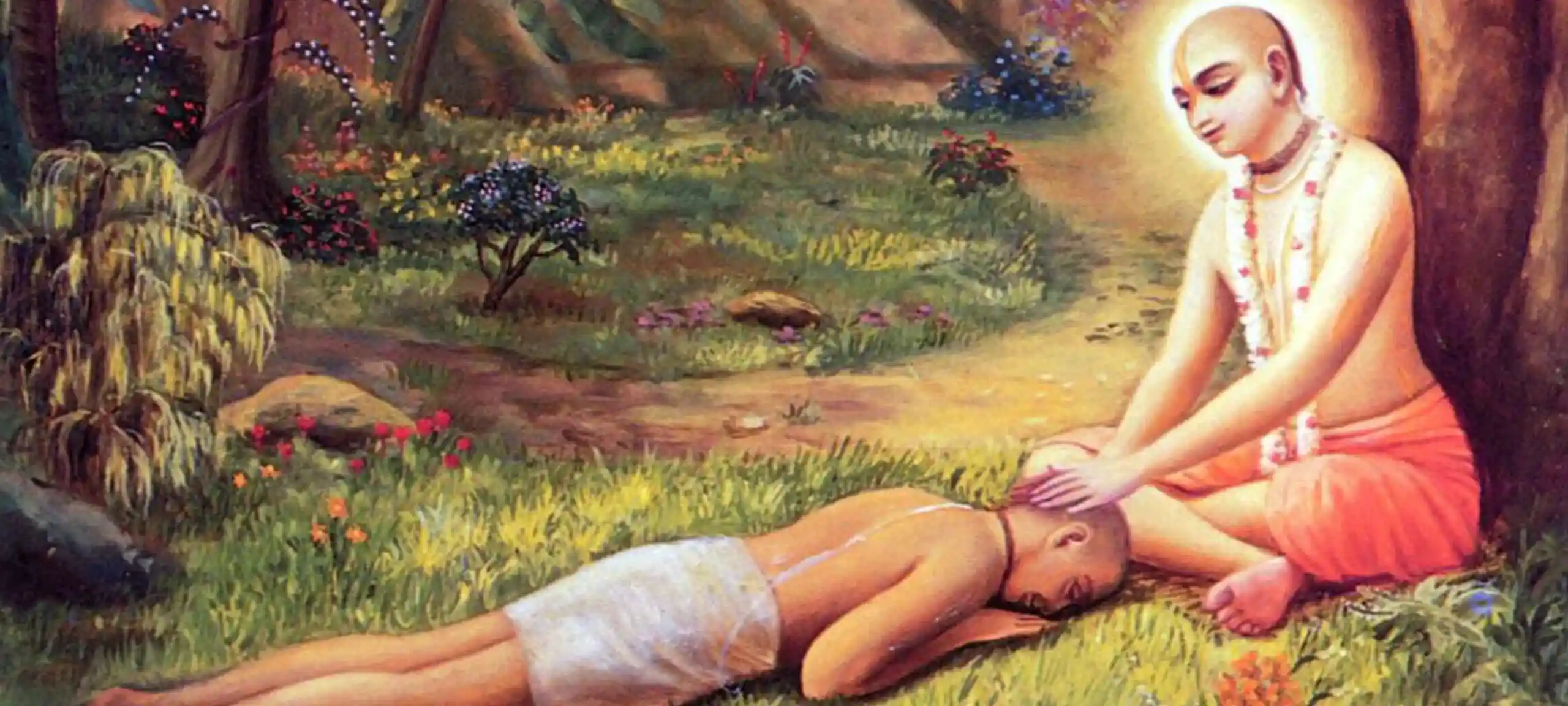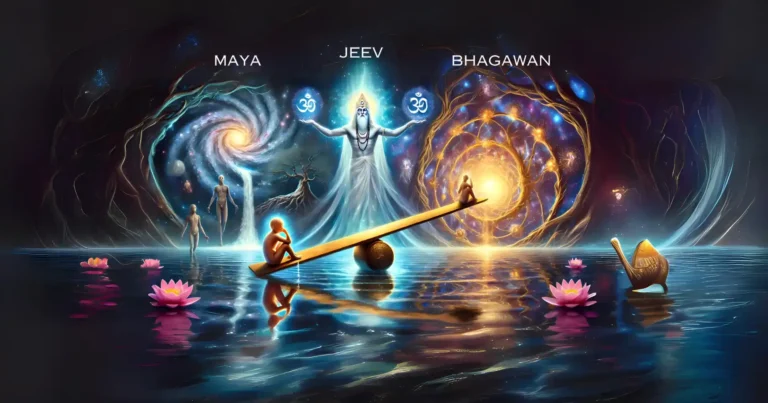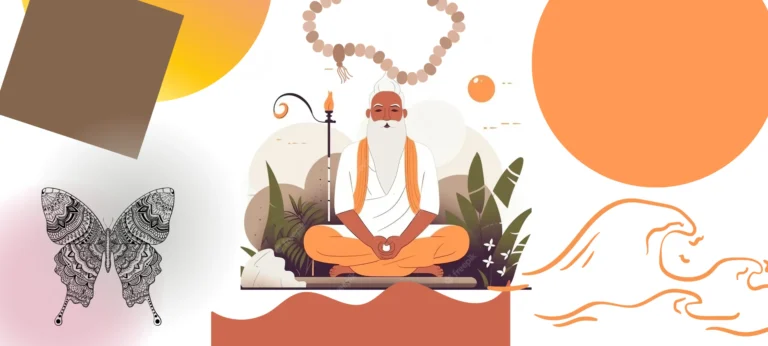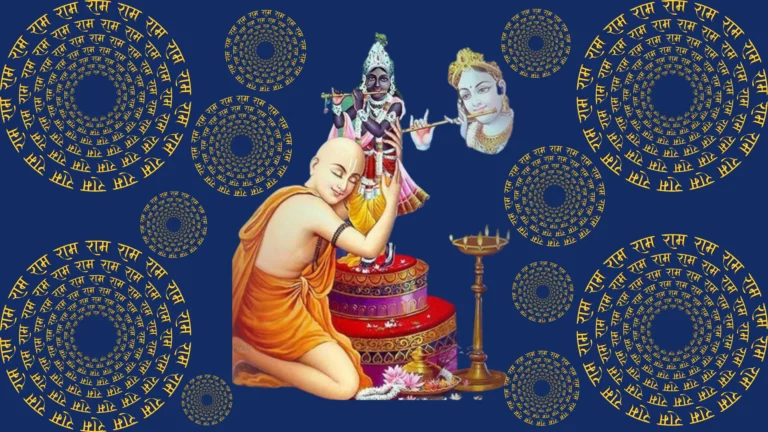Table of Contents
7 Spiritual Insights into Dandvat Pranam
- Represents surrender to the divine.
- Energizes chakras and calms the mind.
- Awakens Kundalini energy for higher consciousness.
- Integrates humility as a spiritual quality.
- Connects individuals to cosmic forces.
- Acts as a Bhakti Yoga practice for devotion.
- Reinforces cultural and spiritual traditions.
What is Sashtang Dandvat Pranam?
Prostration is an integral aspect of Sanatana Dharma. Hindus, prostrate before elders or people in the renounced order, to seek their blessings.
Why should we Prostrate?
When the body is aligned vertically with the palms joined, facing each other, in a stretched condition, above the head, lying on the chest, with the knees, wrists, chest, thighs, genitals, and toes resting against the ground, it represents a powerful energy meridian. This pose is Dandvat Pranam.
When the inner mood of the heart, is that of prayer and surrender, this pose shall immediately attract, the vital energy force of the universe.
It aligns the bodily currents, just as electricity aligns the electrons, in an electric conductor. This alignment calms the mind and energizes the chakras. It supports the Awakening of Kundalini without fail.
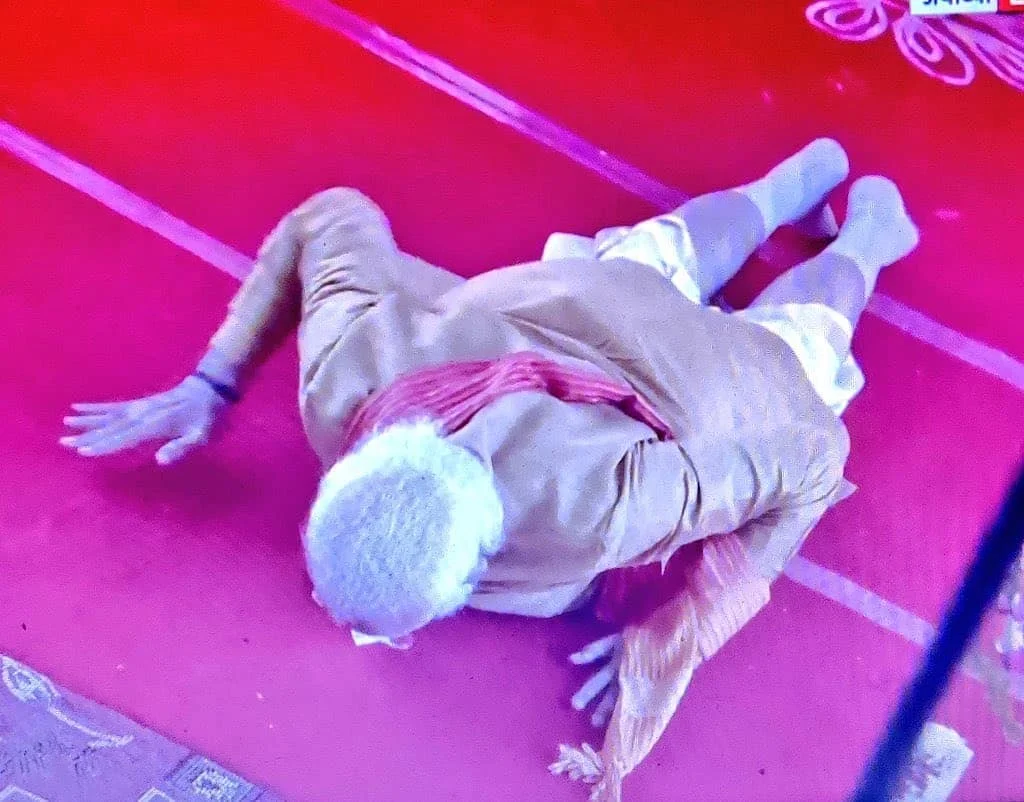
Paying obeisance through prostration is an effective means towards one’s higher journey. It is in the Hindu faith, that one’s life goal is towards attaining the Supreme.
Other than this there is no purpose to life; only such a person is a true Hindu. In the golden old days of yore, prostrations, offering the body full length with the body stretched, fully on the ground, in front of saints and elders, was a common practice.
Significance of Dhoti in Sanatana Dharma
You would have seen traditional people wearing Dhoti while visiting their Guruji’s ashram. Dandvat Pranam (Sahtang Dandvat) is a mark of respect for both, God and Guru.
In many parts of rural India, dhoti has survived to remain the regular outfit for men. However, with metropolitanization, this tradition has disappeared. Dhoti is the simplest cloth possible to cover one’s body. It is not fancy whatsoever. Meant only to cover the body, dhoti marks simplicity and dignity.

Silk Dhoti’s are most preferred for auspicious, religious, and spiritual festivals. Men in South India prefer to wear Mundu which is a single piece of cloth wrapped around the thighs, less commonly seen in Northern India.
It is simple and extremely comfortable to wear. Traditional outfits do not have any knots. So, next time you wear a dhoti, ensure you don’t tie too many knots to it!
Spirituality aims at simplicity. If desires are less, only needs remain. Fulfilling the needs of a spiritual aspirant is the Lord’s responsibility, which He should graciously fulfill.
So, let’s continue…
With changing times, Dandvat Pranam practice lost its presence. Foreign invasions and British influence on the common man, has killed this practice, which then considered to be an expression of the higher journey.

Now, let us investigate the gesture of paying obeisance through prostration a little further.
Test your Alignment with the Spiritual Subject Matter (only 7 Questions)
The scores generated in this Quiz are relative. There are no right or wrong answers. A percentage towards 100 indicates that you are more aligned to the overall subject matter.
A Spiritual Practice Called Sashtang Dandavat
This practice of prostration, takes the form of sadhana when associated with the Supreme. In holy sites connected with Sanatana Dharma, there is a sadhana or spiritual practice of paying obeisances through prostrations around holy structures like mountains and rivers.
People offer 108 prostrations in front of rivers like the Ganges and Sarayu Devi in Ayodhyaji. People make many prostrations to Goverdhanji hill and the river Yamunaji in the Mathura district, in Uttar Pradesh, India.
These rivers and mountains are fully spiritual by Nature. They are a storehouse of other-worldly energy.
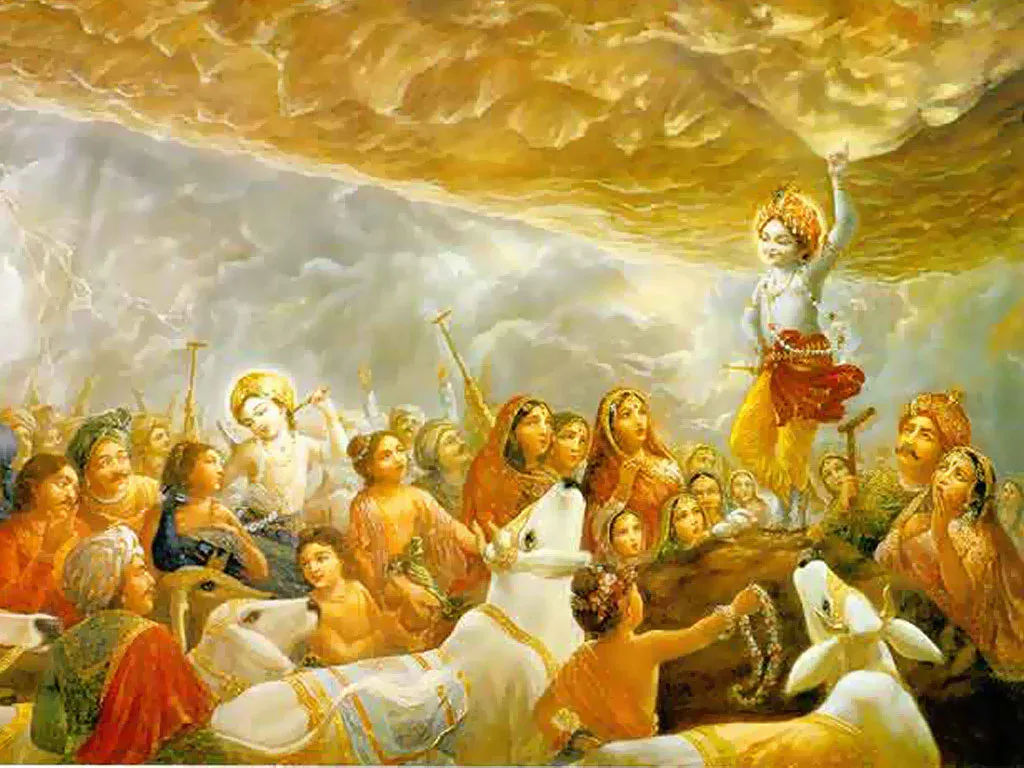
Undertaking a spiritual routine of prostrations is known as “Vandanam”. Vandanam” is one of the 9 main processes of Bhakti Yoga. This practice breaks the unnecessary and unhealthy body vibrations and harmonizes the bodily vibrations in such a way that the chakras or energy centers become capable of raising the overall consciousness of the individual offering prostrations.
This process is also known as “Dandavat” or the act of “falling like a stick”.
Benefits of Surya Namaskar
The more one subscribes to the habit of offering prostrations, the more, humility grows within one’s heart and one becomes capable of becoming a vessel to spiritual grace. It is a practice that females offer “Dandavat” without touching their chest to the ground.
This means, only their knees and head must touch the ground with knees folded and body crouched. The process of “Dandavat” can be life-changing if taken up as a process of spiritual practice.
People undertaking spiritual practices offer something known as “Surya namaskar” at dawn which also means offering prostrations to Sun-God.
Offering obeisance’s to the Sun, increases vitality and personal power. One becomes the owner of a healthy body and one also gains immense fame and wealth, if one were to do Surya namaskar for a year, at dawn, without fail.

Offering obeisance through prostrations, is an act of sadhana or spiritual practice, that can bless one with the highest benefits incomparable to any material gains. Dandvat Pranam symbolizes Humility and has great significance in spiritual circles.
Humility in Santana Dharma
The goal of Sanatana Dharma is to help living entities attain freedom from their compulsive thought and action patterns and attain liberation. Sanatana Dharma recommends greatly, the attainment of humility in the heart as the number one step.
Even Attaining Humility at heart can qualify one sufficiently to get to liberation. Expression of humility happens in two ways. One is through action and the other through a thought or a feeling in the heart.
Sashtang Dandvat Pranam makes our heart soft
Spiritual rigor, recommended by Shastra, is a step towards this goal, to make the heart soft. The outward representation of humility is to bow down, to prostrate.
Prostration is the recognition of our smallness when compared to the vast expanse of the rest of Creation. Sanatana Dharma uses the technical term Dandvat Pranamto represent such Prostration.
Wise men of Bharath say that physical action even when done mindlessly, in the long run, can result in a change of heart, in alignment with the action.
Offering Sashtang Dandvat Pranam to All ?
For example, if someone is hard-hearted, elders following the Dharma recommend to the person performance of Dandvat Pranam to each and every individual the person meets. This is the way to express humility.
Initially, we may do an activity with detest.
But if the activity is pure and genuine and we continue the practice, over a period of time it becomes a great habit. Automatically, over time, the heart of the person performing Dandvat starts melting and the person becomes humble in due course.
3 Occasions when Sashtang Dandvat Pranams is Offered
There are many occasions when we offer Sashtang Dandvat. This is part of the tradition or culture within Santana Dharma.
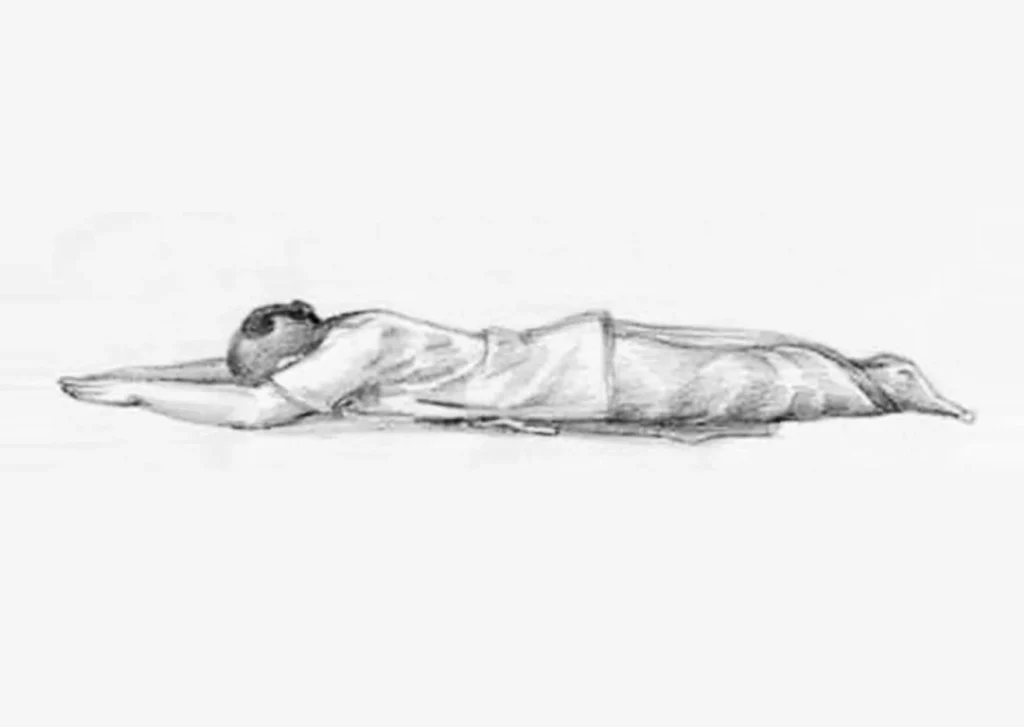
We shall discuss some of the occasions when someone offers Sashtang Dandavat as part of the tradition, and the goal of such practices. People follow some of the practices even today.
1) Prostrating Before the Deity, In Temples
The Deity is the symbolic representation of the Creator himself. That is where all the constructive forces of the universe lie untapped and concentrated. It is very sad that, in these modern times, people forget this fact.
When there is a deity in the house or in the temple, the master of the household serves and looks after the deity according to Scriptural injunctions. When we offer such service, it awakens the potency of the Creator in the deity.
Offering obeisances or Sashang Dandvat to the deity at home or in the temple is a powerful practice that can prove transformative.
Deity is the symbol of the Universe’s Creative Force
Whenever people prostrate or offer Dandvat pranams to Deities, the effect is almost immediate. The priest of a temple looks after the deity at a temple while the master of the house serves the deity at home.
Automatically the care-takers are connected with the source of Creation. They offer their prostratitions to the deity. Positive energies flow from the feet of the deity into the Sahasra Chakra of the one who offers Dandvat Pranams.
If one is offering Sashtang Dandvat consciously, understanding the science behind such prostration, the results can be phenomenal. Vandanam is the process where one offers Dandvat to deities and represents one of the nine Scripturally documented processes of Bhakti Yoga.
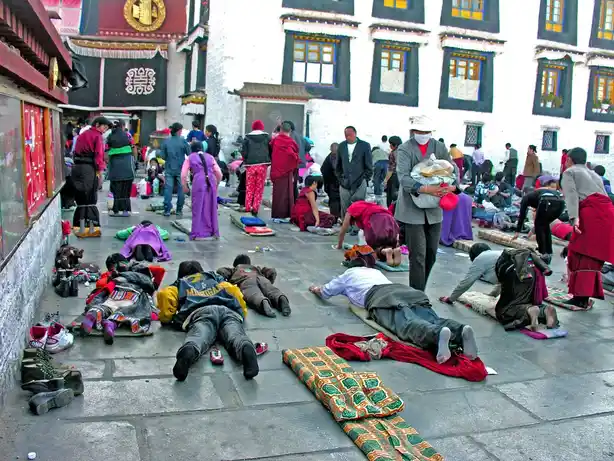
Therefore, as a rule, if someone wants to transform positively, one should offer Dandvat Pranam to the deity. This is the best methodology.
2) Dandvat Pranams to Elders
Some people of Bharath, especially in the villages follow this process to this day.
In the olden days, elders and older people were people of Knowledge, people who had surrendered to the Lord. These were people who only wished well for others and had an open heart and never saw differences between their own children and the neighbor’s child. Such people were role models for the next generations.
They were living ideals and housed within their persona a wealth of positive qualities. What could be a better way to imbibe their qualities than to offer them Dandvat Pranams?
Dandvat Pranams to elders is an ancient practice
So, in ancient India, it was customary for the young of the family to prostrate all the elders, one by one. When people visited their older relatives they did this.
When older people visited them, the young would immediately offer them Pranams. This transmitted positivity and a sense of love and respect within the entire neighborhood. People considered offering Dandvat Pranams was as a practice that glued families together, where there was no scope of enmity or partisan.
However, offering Pranams in Indian households has become a rare sight.

The world is fast-changing and western influence has been corroding the Indian value system. More than that elders are no more the same. They have become greedy and selfish and manipulative. They are no more the ideal role models that Dharma speaks of.
Many of them are sad and forlorn. There is nothing within them that they can offer or share. What shall one get, offering Dandvat Pranams to such elders?
If we follow a practice, it should not be a mere ritual, it should be done with absolute spirit. Therefore offering Sashtang Dandavat to elders is a fast receding practice, in current times.
Alternately, it is better to continue offering Dandvat Pranams to well-served Deities, who never recede in their potency.
3) Sashtang Dandavat at Marriages in Sanatana Dharma
This has always been a powerful practice whenever a couple ties the knot of wedlock, following the rules of Sanatana Dharma. The Saptapadi Ritual is exclusively done in honor of Agni Bhagawan.
The Dharma expects us to follow certain conditions in order to establish a legitimate relationship between man and wife. There are several considerations that go up to make a proper marriage ceremony, in line with Sanatana Dharma.
Only under these circumstances, does it make sense to discuss the holy process of offering Dandavat by the couple to the rest of Creation. When a wedding takes place in agreement with the considerations of the Dharma, two diverse souls, integrate through covenance.
The couple offers Dandavat Pranams to the priest who is making the marriage possible with the utterance of the mantra. The priest is considered as the direct representative of God, officiating on His behalf, at the marriage.
The couple offers Sashtang Dandvat to Agni Deva who is witness to the wedlock. The couple offers Dandvat Pranams to several deities installed through invocation, participating in the marriage ceremony.
Finally, the couple offers Pranams to both their parents.
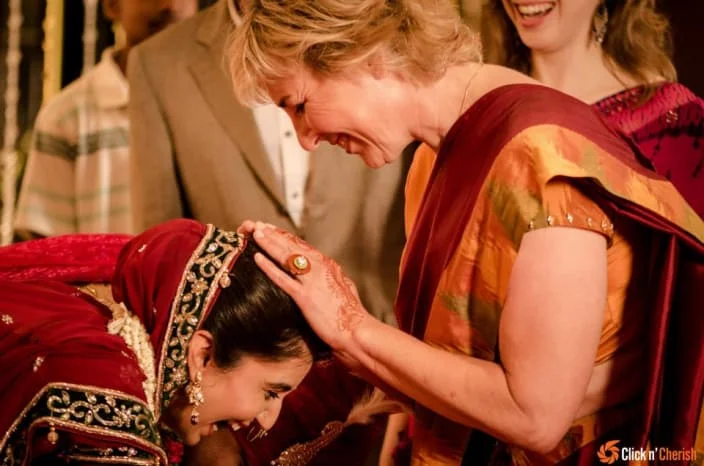
Of course, then there is a series of Dandvat Pranams offered to Elders of both households. When the couple offers Pranams, there are starting their married life on the right note.
They have accepted the good wishes of the entire universe by offering Prostrations and have abided by the laws of Shastra.
You display your love by reading this valuable material. So kindly read and consider financially supporting us to keep our efforts going with renewed vigor! Supporters in India can donate via Razorpay while those abroad can use PayPal!

